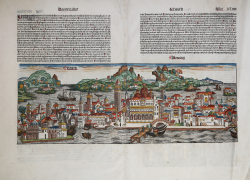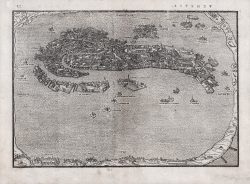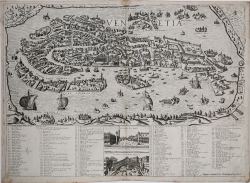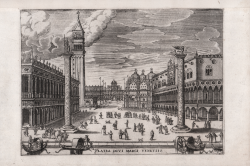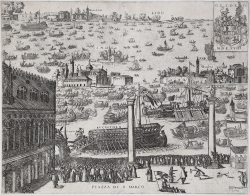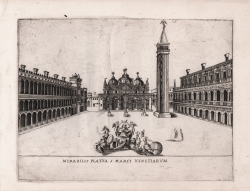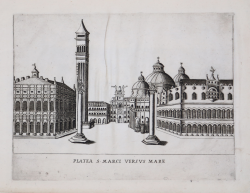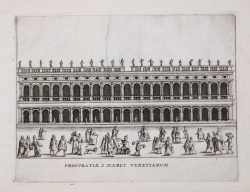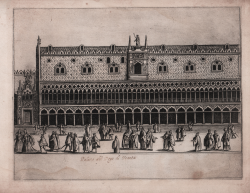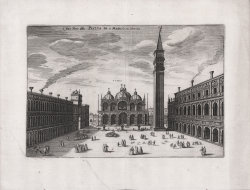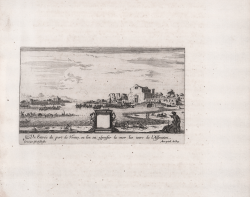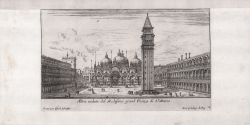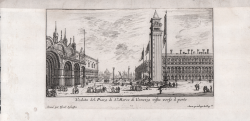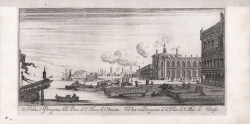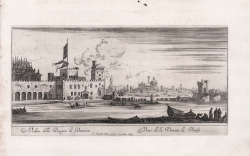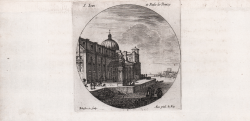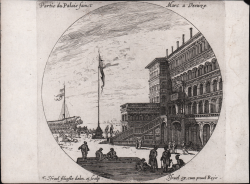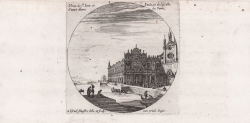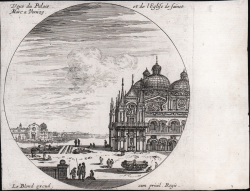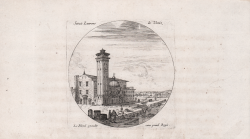Lo Sposalizio del Mare [The Marriage of the Sea]
Giovanni TEMINI
Code:
A50369
Measures:
450 x 350 mm
Year:
1618
Printed:
Venice
Mirabilis Platea S. Marci Venetiarum
Giacomo LAURO
Code:
s29737
Measures:
240 x 190 mm
Year:
1638
Printed:
Rome
Platea S. Marci versus mare
Giacomo LAURO
Code:
s29738
Measures:
240 x 190 mm
Year:
1638
Printed:
Rome
Procuratiae S. Marci Venetiarum
Giacomo LAURO
Code:
s29740
Measures:
240 x 190 mm
Year:
1638
Printed:
Rome
Palazzo del Doge di Venetia
Giacomo LAURO
Code:
S1862
Measures:
237 x 180 mm
Year:
1638
Printed:
Rome
L'Altra Parte della Piazza di S. Marco in Venetia
Matthaus MERIAN "il vecchio"
Code:
S51164
Measures:
310 x 205 mm
Year:
1638 ca.
Printed:
Frankfurt
Un Entrée du port de Venize, ou l'on va espouser la mer les iours...
Israel SILVESTRE
Code:
S41958
Measures:
198 x 115 mm
Year:
1645 ca.
Printed:
Paris
Altra veduta del Medesima grand Piazza di st. Marco
Israel SILVESTRE
Code:
S41965
Measures:
202 x 120 mm
Year:
1645 ca.
Printed:
Paris
Veduta del Piaza di St. Marco di Venezia vista verso il porto
Israel SILVESTRE
Code:
S41966
Measures:
202 x 120 mm
Year:
1645 ca.
Printed:
Paris
Veduta e Prospetiva della Piaza di St. Marco di Venezia / Veuë et...
Israel SILVESTRE
Code:
S41961
Measures:
252 x 132 mm
Year:
1645 ca.
Printed:
Paris
Veduta della Dogana di Venezia / Veuë de la Dovane de Venise
Israel SILVESTRE
Code:
S41957
Measures:
150 x 125 mm
Year:
1645 ca.
Printed:
Paris
S. Iean et Paule de Venize
Israel SILVESTRE
Code:
S41955
Measures:
120 x 120 mm
Year:
1645 ca.
Printed:
Paris
Partie du Palais sainct Marc a Venize
Israel SILVESTRE
Code:
S41964
Measures:
120 x 115 mm
Year:
1647
Printed:
Paris
Veue de St. Iean et Paule, et l'escolle Sanct Mare de Veniz
Israel SILVESTRE
Code:
S41954
Measures:
120 x 120 mm
Year:
1647
Printed:
Paris
Veue du Palais et de l'Eglise de Sainct Marc a Venize
Israel SILVESTRE
Code:
S41963
Measures:
120 x 115 mm
Year:
1648 ca.
Printed:
Paris
Saint Laurens de Veniz
Israel SILVESTRE
Code:
S41953
Measures:
116 x 120 mm
Year:
1648 ca.
Printed:
Paris

